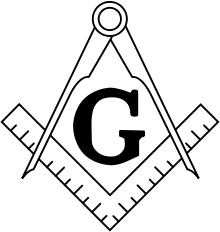Royal Order of Scotland
| Part of a series on |
| Freemasonry |
|---|
 |
|
History
|
|
Masonic bodies
|
|
Views of Masonry |
|
People and places
|
The Royal Order of Scotland is an honor society linked to Freemasonry. Membership is an honour extended to Freemasons by invitation.
Organization
The Grand Lodge of the Royal Order of Scotland is headquartered in Edinburgh, with a total of 88 Provincial Grand Lodges in several locations around Britain, and in a number of countries around the world. The order claims the King of Scots as hereditary Grand Master. The Deputy Grand Master and Governor of the order is currently Sir Archibald Donald Orr-Ewing, 6th Baronet (b. 20 December 1938). Orr-Ewing is the eldest son of Sir Ronald Archibald Orr-Ewing, 5th Baronet and was educated at Gordonstoun and Trinity College, Dublin. He was the Grand Master Mason of the The Grand Lodge of Antient, Free and Accepted Masons of Scotland, until 27 November 2008, a post he held since 2005. He previously held the post between 1999 and 2004, being the only person to hold that office twice. He was installed as Deputy Grand Master & Governor (the administrator) of the Royal Order of Scotland at Edinburgh on 3 July 2009. In times in which there is no King of Scots, the Deputy Grand Master and Governor is the worldwide leader of the Order.
The ROS Grand Lodge and the Provincial Grand Lodges confer two degrees:
- Heredom of Kilwinning
- Knight of the Rosy Cross
History
The order has existed since at least 1741, based on records in the archive of the Grand Lodge demonstrating activity in London, with a further charter being granted in 1750 to work the degree at The Hague. The holder of that warrant, William Mitchell, moved to Edinburgh around 1752/3, using the charter to establish a Provincial Grand Lodge there. In 1767 this body became the Grand Lodge of the Royal Order of Scotland.
Activity appears to have dwindled with the Order nearing extinction in the early 19th century but a resurgence culminated in the establishment of further Provincial Grand Lodges by 1843.
The legends of the order date its origination to the reign of King David I in the 12th century in the Heredom degree, with the Rosy Cross degree originating in 1314 following the Battle of Bannockburn.

Membership
Qualifications for membership vary by provincial jurisdiction but typically include: being proposed by an existing member (this is an invitational body), having been a Master Mason for a minimum of five years, and the profession of a Trinitarian Christian faith. Other restrictions may include, but are not limited to:
- Active membership of the 18th degree of the Ancient and Accepted Scottish Rite and at least one other Christian Order. OR
- Membership of the Holy Royal Arch and at least one Christian Order. OR
- In the United States the candidate should hold the 32nd degree of the Ancient and Accepted Scottish Rite, although this may be waived if the Petitioner is a Knight Templar (York Rite). The candidate must also be a Trinitarian Christian by faith. They also require that all applicants must be entitled to honor in Freemasonry because of services performed for the Craft, the Church, or the Public. The R.O.S. considers offices held in Masonic Bodies as evidence of service performed to the Craft. Also, honors already received in the fraternity such as the K.C.C.H., the 33rd degree, the Red Cross of Constantine, the K.Y.C.H., etc. The R.O.S. also considers services such as offices held in Church, activity on Boards and Committees, active work with the Boy Scouts, DeMolays, Community drives, etc., or other types of evidence of service performed for one's fellow-man. The R.O.S. will judge each application on its own merit.
See also
External links
| Wikimedia Commons has media related to Royal Order of Scotland. |
- Royal Order of Scotland
- The Provincial Grand Lodge of the Royal Order of Scotland for the United States of America, Puerto Rico, Republic of Panama, Guam and the US Virgin Islands
| ||||||||||